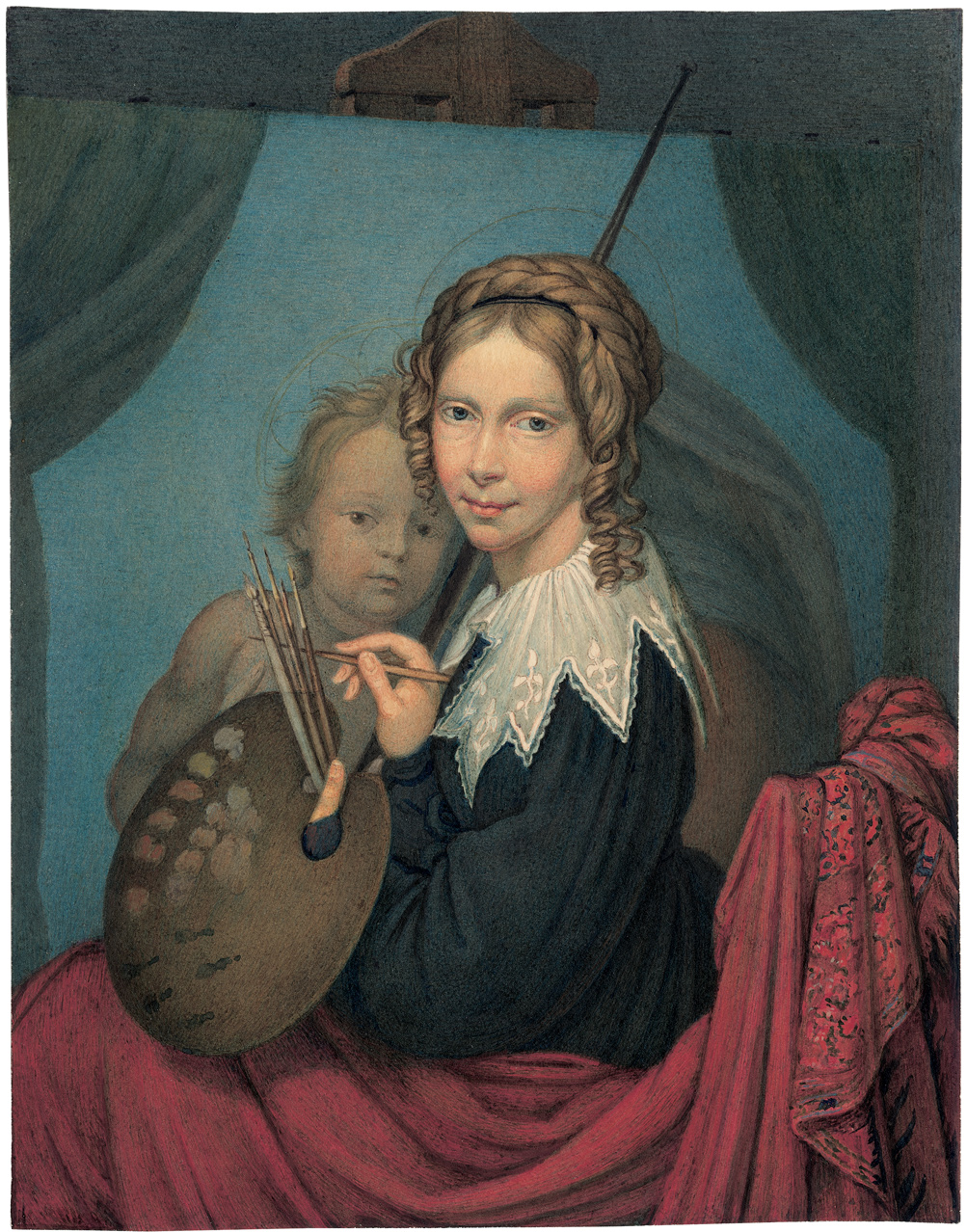Loading the page ...
Friedrich Bury
(1763 Hanau – 1823 Aachen)
Portrait of the Princess Augusta of Hessia-Kassel in front of a copy of the Sistine Madonna. Watercolour and gouache. 23.4 x 18.1 cm. Ca. 1808.
This portrait is based upon a painting by Bury, of which two versions are recorded. The whereabouts of the painted prototype for our watercolor is currently unknown: until 1914, the painting was in the possession of Rudolf Bury in Hanau (see Georg Biermann, Deutsches Barock und Rokoko, Leipzig 1914, Vol. II, p. 438, ill. 740). The second version remains in the Museum Schloss Fasanerie in Eichenzell near Fulda.
The painter Friedrich Bury lived and worked between 1782 and 1799 in Rome, where he shared an apartment with Wilhelm Tischbein for several years. He subsequently belonged to the close intellectual circle around Johann Wolfgang von Goethe; indeed, they lived in the same palazzo for a period. In Rome, Bury drew after antique works of art and established his reputation with his watercolour copies after Michelangelo, Raphael, and the Carracci. After his return to Germany, he was active in Berlin as a painter of history paintings and portraits. Bury also maintained privileged connections with the Prussian court, where he had close ties to Augusta, born Princess of Prussia (1780–1841), and daughter of King Frederick Wilhelm II. Augusta was eventually married to Prince Wilhelm of Hessia-Kassel; during the Napoleonic wars, the princely pair was driven out of Kassel by the French and found refuge at the court of Berlin. Here, Bury provided painting instruction to the princess and her sister Wilhelmine of Nassau-Oranien. King Frederick Wilhelm III purchased from Bury a copy of Raphael’s Sistine Madonna, which hung above the secretary in the red corner room of his palace.
Augusta of Hessia-Kassel, herself a painter of some merit, was portrayed by Bury at least four times. Our portrait shows her in half-figure, seated at the easel while working on a copy of the Sistine Madonna. The princess is dressed quite modestly in a simple dark dress with lace collar, and a wide red shawl hangs from the arm of her chair and covers her legs. Interrupting her work for a brief moment, she looks at the spectator with a docile, slightly melancholic expression. In her left hand she holds the painter’s palette, while her raised right hand rests on her painter’s stick. The painting on the easel shows only the upper third of Raphael’s famous altarpiece, with the tip of the easel visible behind the top of her painted copy. Bury’s composition is a witty, intelligent play between the princess and her painted subject. Bury has placed Augusta in such a manner that her body covers most of the Madonna, while the Christ child seems to affectionately lean against her. It appears as though she is wearing the Madonna’s halo, conferring upon her even greater nobility. Bury’s treatment of color here is very appealing: the rich ruby red of the embroidered shawl creates a strong contrast with the dark dress and the cool green and blue tones of the altarpiece. The bright, finely modeled flesh tones and the sensitive treatment of eyes, nose, and mouth, draw the viewer’s attention to Augusta’s beautiful face. Our perfectly preserved sheet, with its fresh colors, can be dated to somewhere around 1808 based on the appearance of the princess, who appears to be approximately twenty-eight years of age.
From the collection Strähnz, Leipzig (not recorded by Lugt); a German private collection. A written expert opinion by Professor Helmut Börsch-Supan, dated December 7, 2005, accompanies this sheet.
